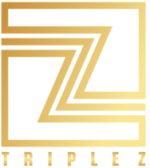Source: pennmedicine.org
 In between each of the 26 bones, called vertebrae, that make up your spine are discs. These discs are made up of a jelly-like substance and act as cushions for your spine.
In between each of the 26 bones, called vertebrae, that make up your spine are discs. These discs are made up of a jelly-like substance and act as cushions for your spine.
A herniated (or slipped) disc occurs when all or part of a disc is forced through a weakened part of the spine. This may place pressure on nearby nerves or the spinal cord.
The lower back is most commonly affected by herniated discs. Some common symptoms of a herniated or slipped disc include:
-
- Pain that occurs on one side of the body.
- Sharp pain in one part of the leg, hip, or buttocks and numbness in other parts. You may also feel pain or numbness on the back of the calf or sole of the foot. The same leg may also feel weak. These are usually indications of a slipped disc in the lower part of the spine.
- Pain when moving your neck or deep pain near or over the shoulder blade. You may also feel pain that moves to the upper arm, forearm, and fingers and numbness along your shoulder, elbow, forearm, and fingers. These are common symptoms when you have a slipped disc in your neck.
The pain of a slipped disc often feels worse:
-
- After standing or sitting
- At night
- When sneezing, coughing, or laughing
- When bending backward or walking more than a few yards
Diagnosis of Herniated Disc Disorders
A careful physical exam and a review of medical history is almost always the first step in diagnosing a herniated disc.
Depending on where you have symptoms, your doctor examines your neck, shoulder, arms, and hands, or your lower back, hips, legs, and feet.
Your doctor will check:
- For numbness or loss of feeling
- Your muscle reflexes, which may be slower or missing
- Your muscle strength, which may be weaker
- Your posture, or the way your spine curves
Your doctor may also ask you to:
- Sit, stand, and walk. While you walk, your doctor may ask you to try walking on your toes and then your heels.
- Bend forward, backward, and sideways
- Move your neck forward, backward, and sideways
- Raise your shoulders, elbow, wrist, and hand and check your strength during these tasks
Leg pain that occurs when you sit down on an exam table and lift your leg straight up usually suggests a slipped disc in your lower back.
In another test, you will bend your head forward and to the sides while the health care provider puts slight downward pressure on the top of your head. Increased pain or numbness during this test is usually a sign of pressure on a nerve in your neck.
Other diagnostic tests your doctor may recommend include:
- Electromyography (EMG) to determine the exact nerve root that is involved.
- Myelogram to determine the size and location of disc herniation.
- Nerve conduction velocity test.
- Spine MRI or spine CT to show where the herniated disc is pressing on the spinal canal.
- Spine x-ray to rule out other causes of back or neck pain, though it’s not possible to diagnose a herniated disc by a spine x-ray alone.
Treatment at Penn
Herniated discs are initially treated with a period of rest along with pain and anti-inflammatory medications. Your health care team will next suggest physical therapy to help ease pain and improve your range of motion. If pain and other symptoms persist, your health care team will likely recommend surgery to remove the herniated portion of the disc.




